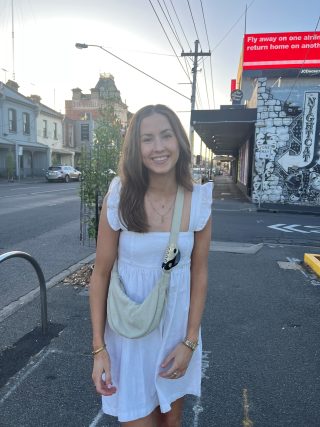- Australians under 30 saving more than $450 each month by cutting back
- Gen Z embracing emerging ‘cash conscious’ trends emerging overseas and on TikTok including ‘loud budgeting’ and ‘no and low-spending months’ to contend with rising cost of living
- 56% using the money saved from cutting back on discretionary spending to stash into savings
Younger Australians are increasingly cutting back on non-essential spending and redirecting that money into high interest savings or offset accounts in response to the rising cost of living.
New consumer sentiment data from NAB Economics reinforces emerging TikTok trends which show Gen Zs embracing a ‘cash conscious’ attitude, capitalising on cutbacks they’re making on increasingly expensive non-essentials.
Australians under 30 are most commonly cutting back on eating out at restaurants ($124), micro treats like coffees, snacks and lunches out ($73), entertainment ($64), car journeys to save on petrol ($70), food delivery services ($96) and streaming services ($30).
NAB Personal Banking executive Paul Riley said younger Australians were embracing the ‘loud budgeting’ trend gaining momentum overseas and social media, saving them on average $450 each month.
“In 2024, being ‘cash conscious’ is officially cool with terms like ‘loud budgeting’ emerging overseas and on social media,” Mr Riley said.
“‘Loud budgeting’ is all about unapologetically prioritising your own financial goals, setting smart boundaries on spending, and feeling comfortable to talk about it openly and authentically.
“Rather than going out for an expensive dinner with friends, younger Australians are confidently opting to stay in and choose to put that amount into a high interest savings account or pay down debt.
“The other hot budgeting trend is ‘no or low spending months’ which involve giving up alcohol, takeaway food or shopping for clothes or beauty for the month, not booking holidays, food prepping or bringing your lunch to work or finally asking mates to repay cash you’re owed,” he said.
More than half (56%) of Gen Z and younger Australians are using the money they’re saving – an average of $450 each month – from cutting back on non-essentials to stash into their savings accounts instead.
“The younger you are, the more likely you are to stash that money into a high interest savings account or an offset account so instead of spending it, you’re saving it,” Mr Riley said.
“We’ve seen steady growth in the number of younger customers opening savings accounts in the last 12 months and, despite cost-of-living pressures, savings account balances in this age group have risen too.”
The number of high interest savings accounts opened by Gen Z NAB customers has grown 24% over the last year and savings account balances belonging to this cohort have increased by 5.3%.
“Your bank can also help you keep a closer eye on your saving and spending, and most have easy and free tools that can automatically categorise where your money is going or help you set goals,” Mr Riley said.
23-year-old Maya McIntyre has chosen to cut back on some purchases and is putting an extra $250 into a high-interest savings account each month, where she’s determined to grow her balance.
“I’m definitely making some changes to what I’m spending money on and I’ve cut back on things like streaming subscriptions, I’m eating out less and I’m choosing cheaper or free things to do with friends rather than expensive meals and pub visits.

“Most of my friends are making some changes to the way we think about our finances and some of us are definitely more open to saying ‘no’ to things if we feel like we want to save money instead,” Maya said.
More than 1.5 million NAB customers are using the spending feature across the NAB app and internet banking, a 62% jump since mid-2023.
The tool automatically categorises transaction data so customers can better identify where their direct debits are going, removing the need to trawl through old statements. Customers can quickly see their spend on subscriptions, memberships, insurance, gym and health, supermarket and other payments all in one place.
NAB provides these services by enhancing the transaction data of its over three million digital customers to deliver personalised spending insights that help customers better manage their money.
Details:
- Data from NAB Economics Q4 Consumer Sentiment survey of around 2,000 Australians.
- High interest savings accounts opened measured by NAB Reward Saver (+24% open year on year) and account balances have grown 5.3% year on year.





